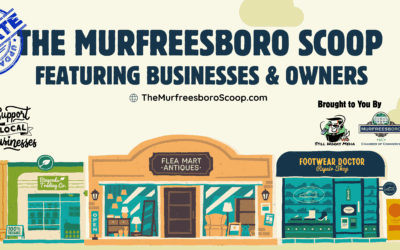There’s nothing more exciting than planning your local marketing budget, but it can also feel overwhelming! Whether you’re working with $500 or $5,000, it’s vital to set a realistic budget that aligns with your goals and helps you connect with your community. In this post, I’ll guide you through the process of determining the right budget for your needs, so you can maximize your impact without breaking the bank. Let’s dive in and make your marketing efforts as effective as possible!

Understanding Your Business Needs
For any local marketing budget to be effective, it’s important to truly understand your business needs. This goes beyond just knowing how much money you’re willing to spend. I need to look at my specific goals, my market, and the resources I currently have available. If I want to increase brand awareness, drive foot traffic, or generate leads, my budget should reflect those priorities. Additionally, understanding variables like seasonality, competitor activity, and customer behavior can all impact how I allocate my resources.
Assessing Current Marketing Efforts
Needs assessment starts with a clear picture of my current marketing efforts. I can take a closer look at my existing strategies — online advertisements, social media presence, email campaigns, and local events. What seems to be working for me? What isn’t? It’s often helpful to keep track of performance metrics, such as engagement rates or conversion statistics, as they provide valuable insights into where I stand. By identifying areas that require improvement, I can better allocate my budget towards effective channels and eliminate any unnecessary spending.
Identifying Target Audience
To effectively reach my local market, I must understand who my target audience is. This goes beyond demographics; I should probe into their interests, behaviors, and pain points. By creating a detailed profile of my ideal customer, I can tailor my marketing messages to resonate with them. Knowing whether my audience prefers social media, email, or traditional advertising forms will significantly influence my budget’s direction.
Understanding my target audience is not just beneficial; it’s important for maximizing the impact of my marketing efforts. When I align my messaging and campaigns with their preferences, I’m creating a solid foundation for return on investment (ROI). Moreover, by narrowing down my focus,
How to Determine Your Marketing Budget
If you want to set a realistic local marketing budget, the first step is to understand what you can afford to spend. It’s important to evaluate your current financial situation and determine how much you’re willing to allocate towards marketing. This involves looking at your previous marketing expenses, the profitability of your business, and any upcoming financial commitments. I often recommend taking a percentage of your projected revenue for the year and deciding on a fraction of that for your local marketing efforts. This way, you’re not only aligning your budget with overall business goals but also ensuring that you invest wisely without overstretching your finances.
If you operate in a competitive market, understanding local market conditions is pivotal in shaping your budget. By analyzing your competitors, I can identify their marketing strategies, explore gaps in the market, and determine what local customers truly value. Tracking local trends and demographics can also provide valuable insights to tailor my messaging and refine my promotional efforts, ultimately leading to more effective use of my marketing budget.
Analyzing Local Market Conditions
If you want to get ahead in your local market, examining the competitive landscape can guide your budget decisions. Look closely at other businesses in your area—what marketing channels are they using? Are there any underserved customer segments that you could target? This step will not only help me understand where I should invest my efforts but also how to differentiate my business to stand out in a crowded marketplace.
Establishing Budgeting Goals
Establishing your budgeting goals involves aligning your marketing strategy with your business objectives. Together, we’ll want to set specific, measurable targets for what you want to achieve through your marketing efforts. Is your primary goal brand awareness, lead generation, or customer retention? Once I identify these goals, I can allocate my budget more effectively to support high-impact initiatives that drive results.
Another important consideration in establishing budgeting goals is the connection between investment and expected outcomes. For instance, if you’re focusing on a new product launch, it makes sense to allocate more funds towards advertising to create buzz. On the other hand, if the focus is on maintaining relationships with existing customers, you might find value in channeling resources into loyalty programs instead. By closely correlating your budget to specific goals, you’re ensuring that every dollar spent contributes positively to your overarching business aim.

Tips for Allocating Your Marketing Budget
One of the first steps to allocating your marketing budget effectively is to set clear priorities. I recommend assessing your goals and determining what you want to achieve with your local marketing efforts. Consider the following tips to help guide your budget allocation:
- Identify your target audience and their preferences.
- Analyze past marketing campaigns for insights on what worked best.
- Decide on a mix of online and offline strategies that would resonate with your audience.
- Set aside a portion of your budget for testing new tactics.
Adjust your budget as needed based on performance data and feedback from your audience. Perceiving the right allocation will empower you to maximize your marketing impact and ensure your resources work for you.
Balancing Online and Offline Strategies
With the digital landscape ever-evolving, it’s vital to find the right balance between online and offline marketing strategies. I’ve found that while online methods such as social media ads, email marketing, and SEO can yield quick results, traditional methods like community events and local print advertisements still hold significant value. By distributing your budget evenly across both categories, you can create a comprehensive marketing plan that reaches your audience through various channels.
In my experience, striking this balance means continually monitoring the effectiveness of each approach. For instance, if you notice that your social media campaigns are outperforming your print ads, you might consider reallocating more funds toward the digital side without completely abandoning your offline efforts. By embracing both tactics, you solidify your presence and cater to varying consumer preferences.
Prioritizing High-Impact Activities
One key aspect of budget allocation is prioritizing high-impact activities. I’ve learned that focusing on the strategies that yield the most significant results for your specific business is imperative. Evaluate which marketing methods are most likely to drive engagement, increase customer acquisition, and generate leads. This might involve investing in a targeted advertising campaign or spending on quality content creation that showcases your brand effectively.
HighImpact activities are the ones that not only bring immediate results but also contribute to long-term growth. For instance, a well-designed local SEO strategy can significantly improve your online visibility, while a powerful community sponsorship can build trust and recognition in your local area. Focusing on these types of initiatives will help ensure that your marketing budget is working as hard as you are to achieve your business goals.

Factors Influencing Marketing Costs
Unlike a one-size-fits-all approach, the factors influencing your local marketing costs can vary greatly. Understanding these elements is key to setting a realistic budget that truly reflects your business needs. Here are some factors I consider:
- Target Audience: The more defined your audience, the better your chances of optimizing your budget.
- Marketing Channels: Different channels, such as social media, SEO, or email marketing, come with varying costs.
- Location: Marketing in densely populated areas might require different strategies than in more rural settings.
- Content Quality: Investing in high-quality content can elevate your brand but also raises costs.
- Time Frame: A short campaign might require more aggressive spending to meet your goals quickly.
After assessing these factors, your marketing costs can start to come into focus, helping you allocate funds more effectively.
Industry Standards
There’s no denying that every industry has its own set of expectations and Standards when it comes to marketing budgets. I’ve found that technology and retail sectors typically allocate a larger percentage of their revenue to marketing compared to restaurants or non-profits. Understanding these benchmarks not only provides insight into how much others are spending, but it can also guide you in making informed decisions about your own budget. Aligning your strategy with these industry standards can help ensure that your efforts are competitive.
Additionally, certain industries might have higher costs due to the nature of their offerings or the complexity involved in reaching their target markets. It can often be helpful to connect with peers in your field or refer to surveys that report on marketing spend within specific industries. This way, you can pinpoint where your budget stands and whether adjustments are necessary.
Competition Analysis
Assuming you are looking to stand out, analyzing your competition is crucial for effectively budgeting your local marketing efforts. I often look to see what strategies similar businesses employ, as this can reveal where I might need to invest more or even hold back. If competitors are leveraging social media marketing or investing heavily in local SEO, I need to factor in these elements to remain competitive. Finding out what works for them allows me to tailor my own strategies accordingly.
Plus, conducting competition analysis doesn’t just mean looking at spending; it can also inform you about the quality of content, the types of promotions they offer, and how they engage with their audiences. Being aware of these attributes can be immensely beneficial. If I see competitors successfully using a tactic, like an influencer partnership, I’ll consider budgeting for that as well, especially if it can lead to a greater return on investment. Alternately, discovering gaps in their strategies can provide me opportunities to differentiate my brand by offering something unique.
How to Track Your Marketing Spend
After establishing a marketing budget, it’s necessary to diligently track your marketing spend to ensure that your strategies are yielding the desired results. I personally find that using tools like spreadsheets or marketing analytics software enables me to keep a close eye on where every dollar is going. Tracking helps you understand what’s working and what isn’t, so you can make informed decisions. If you’re looking for some guidance on creating a budget that suits your needs, check out this resource on How to Plan a Marketing Budget in 6 Steps: 2025 Guide.
Key Performance Indicators (KPIs)
KPI tracking is fundamental for assessing the effectiveness of your marketing budget. I often rely on a few key metrics, such as customer acquisition cost, return on investment, and conversion rates. These KPIs can reveal how effectively your dollars are generating leads and sales, allowing you to refine your marketing strategies. By staying tuned in to these indicators, you can avoid overspending in areas that don’t perform well and focus on what genuinely drives growth.
Budget Adjustment Strategies
Now that you have the data, it’s time to analyze it and adjust your budget accordingly. By identifying which marketing initiatives are producing valuable returns, you can allocate more funds to them, while reducing spend on underperforming campaigns. One necessary strategy is to frequently review your KPIs and have a flexible budget that can adapt to changes in your marketing landscape. This way, I find that my marketing expenses are not only more effective but also more aligned with my overall business goals.
Track your spending across different channels consistently. If a particular campaign is exceeding expectations, consider increasing its budget. On the other hand, if an initiative isn’t performing, it may be wise to scale back or pivot entirely. By remaining agile and proactive, you can ensure that your budget is being utilized in the best possible way, fostering conditions for greater success and the ability to capitalize on new opportunities as they arise.
Creative Marketing Ideas on a Shoestring Budget
To maximize your local marketing efforts without breaking the bank, it’s vital to get a bit creative. I often find that some of the best marketing ideas come from thinking outside the box and utilizing resources I already have at my disposal. For example, leveraging customer testimonials and user-generated content can amplify my brand’s voice at a minimal cost. By sharing these genuine stories and experiences, I not only build trust with potential customers but also create engaging content that encourages interaction and sharing.
Investing your time in innovative solutions can yield impressive results, making it easier to compete with larger businesses. Collaborating with fellow local businesses for joint promotions or events is another fantastic way to stretch your marketing dollar. You can enrich your brand’s visibility while building strong community ties at the same time!
Low-Cost Digital Marketing Tactics
If you think digital marketing is exclusively for those with deep pockets, think again! I often turn to platforms like social media, where I can create engaging posts without spending a dime. By targeting my local audience through tailored posts and local hashtags, I give my brand a much-deserved spotlight. Joining local online groups and engaging with community members allows me to showcase my expertise and gather valuable feedback that can strengthen my outreach efforts.
Another efficient tactic is to start an email newsletter that provides useful content to my audience while promoting my products or services. It only takes a little time to set up an attractive template, and the potential return on investment is fantastic when I consistently engage with my readers.
Community Engagement and Networking
Now, I can’t stress enough how effective community engagement is for a local business. One of the best strategies I’ve adopted is participating in local events, whether that’s sponsoring a charity run or hosting an open house. Not only do these actions boost my visibility, but they also allow me to connect personally with potential clients and showcase my commitment to the community. By building relationships in person, I transform potential customers into advocates for my brand.
It’s important to note that while community engagement is beneficial, it requires genuine effort and consistency. The relationships you build today can lead to valuable referrals down the line. Participating in local networking groups fosters a sense of collaboration and support, making it easier for you to find opportunities. Just remember to be authentic in your interactions — it’s that honesty that will set your brand apart from others in the market. The positive effects of a solid community network can extend well beyond simple marketing, enriching your overall business experience!
Final Words
With these considerations in mind, I hope I’ve shed some light on how to determine a realistic local marketing budget that aligns with your business goals. Whether you’re working with $500 or $5,000, it’s important to focus on strategies that will yield the best return on your investment. Take the time to assess your unique needs and market conditions, and don’t hesitate to adjust your budget as you learn what works for you. The key is to stay flexible and responsive to your results, ensuring your marketing efforts grow alongside your business.
Ultimately, your local marketing budget should be a reflection of your aspirations and the specific landscape in which you operate. I encourage you to think beyond the numbers and prioritize what truly connects you with your community. Whether it’s through engaging social media campaigns or thoughtful local partnerships, find the right mix that resonates with your audience. I believe that with careful planning and a bit of creativity, you can make your marketing budget work wonders for your business, regardless of its size.

Enjoying this content?
Unlock the full post by joining our free newsletter. Get real-world strategies, insights, and ideas that help small businesses grow and thrive.
You have successfully subscribed, Enjoy The Content!
Already Subscribed? Just enter the email to access content





0 Comments